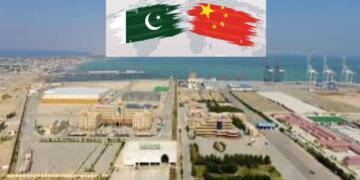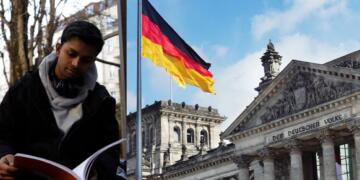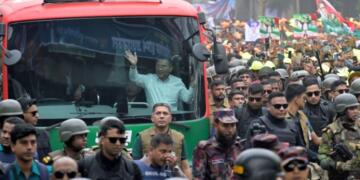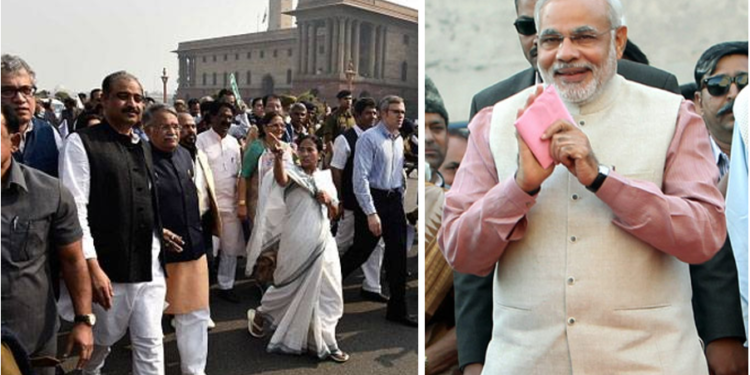For the past 40 odd days, my wallet has been home to a few tens and a couple of hundreds. Nothing more, and nothing less. However, my Paytm account has seen a surge of records in its passbook, with my monthly statement amounting to an amount greater than ten thousand rupees. An average Indian guy, I commute to my workplace through Uber, order my lunch, and on my way back home, get the required supplies. Before 8th November, my Paytm was restricted to Uber only, but now, it takes care of my groceries, supplies, lunch, and other required deliveries. Also, one of my client uses Paytm to pay my consultation fee. I am not a fan of change, and therefore, I chose to stick to a single wallet that I had been using for a while; Paytm. Clearly, demonetization hasn’t constrained my life, but I am just one of the 1.31bn shades that make up the Indian Rainbow. Clearly, the Indian spectrum has some dark shades while some shades luster with fortunes, and demonetization has further added to the dynamics of this spectrum. While an average Indian guy is going about with his life without being alarmed, a farmer was required to dump his grown tomatoes in the middle of the road because of no buyers and difficulties in incurring the transportation cost. Even as we ponder over the thought of our economy going digital (the word ‘cashless’ is grammatically incorrect), we must be careful to consider each aspect of this historic move.
Each conspiracy theory behind demonetization has been discussed in detail, but the reluctance of liberals and intellectuals to discuss the long-run benefits of demonetization come across as a surprise. The comedians who don’t wish to be targeted when they demean celebrities now want the PMO to be answerable for all the crap they show in their videos. The smarter ones are finding religion in currency notes, and the smartest are adding to the woes of the seismograph with their shallow ranting. A couple of CMs even threatened the PMO with the thought of riots and violence, and one of them is leading the riots in her state without any second thoughts for the destruction she is causing to the public property. The liberals, otherwise hysterical, are quiet about the prevailing violence, and given their lack of spine and sensibility, one can’t blame them.
Every 6th person on the planet is an Indian, and it is impossible for a single man, cabinet, parliament, or organization to create a public policy that can appease to the entire nation. People can even find faults in the free mobile internet, as the Ambanis recently learned. Even the biggest vote bank gimmicks, religion and reservation, are not able to appease every voter, so there was no question of an actual progressive decision appealing to each citizen. However, one cannot be naive enough to assume that the PMO didn’t know this already. Any aspiring or serving bureaucrat or diplomat will tell you that no public policy can appeal to an entire nation, and when it is about putting 86% of the currency out of circulation for the greater good, backlash, and critical attacks are inevitable.
For the past few days, certain media houses are complaining that demonetization started out as a drive to wipe out black money and is now serving the cause of digital economy, thus shying away from its intended purpose. One cannot blame them for this shallow analysis, given their service to a single family for years now. Clearly, serving a single agenda for years can rust one’s brain ability to realize the fact that a public policy is supposed to come out strong on multiple fronts. Demonetization, from eradicating black money partially, if not completely, is now focussing on helping the digital aspect of Indian Economy evolve, partially, not completely. Alongside, it has helped the better part of the system nab and nag the diseased part of the system.
From a car crash to the stock market crash, every single event of national importance in this country is politicized. Therefore, it was obvious for demonetization to be politicized at a national and international level. Journals covering Asia-Pacific described PM’s move as both brave and risky, while the Economist went full liberal and compared the PM with the dictator of North Korea. One may assume that Anurag Kashyap has signed up with them after his last Bollywood debacle. Back home, the entire opposition ganged up against one man to oppose demonetization. Before 8th November, liberals complained about PM Modi not being able to act against the corrupt in the system, and after 8th, they sulked for the man had done something unprecedented, leaving everyone from the opposition, the corrupt, the rogue, and dishonest high and dry. If you are an honest Congressmen, you had nothing to worry, but if you were the secretary or a BJP minister, and involved in the hoarding of black money, you faced the music. Instead of making it about political parties, the Prime Minister made it about honest and dishonest, about good and bad, about progress and stagnation, and this is what his enemies couldn’t handle.
The next question was about RBI’s credibility. Working in tandem with the PMO, the RBI was working overtime to handle the cash crunch, ATM calibration and other issues pertaining to banking. Was the RBI completely successful? No, it wasn’t. Could the ATM calibration and cash crunch have been tackled in a better manner? Yes, absolutely. Should they have printed a large quantity of new currency before? No, as that would have been risky, given the increase in the number of stakeholders in the entire process. Couldn’t RBI supply the banks with new currency before 8th Nov? No, as that would have led to leakage of news beforehand.
While planning demonetization, the PMO was like a number 11 facing Wasim Akram. However, after 2000 hours on the night of 8th November, the PMO’s position improved relatively, making it a number 9 facing someone like Mcgrath, and yet, they were far from being the Virat Kohli they wanted to be.
People had found loopholes in demonetization too, and the Indian ‘Jugaad’ was back in business. On the night of 8th November, gold purchasing was at a record high as traders operated till the early hours of the morning. Property was being purchased, along with gadgets, electronics, and anything one could possibly invest in. Interestingly, gold was being sold for an amount twice its price, and some people were even willing to pay an amount that was 4 times the original cost. Turns out, people had found a way to convert black money into white, and that is when RBI decided to be the Shane Warne of PMO’s bowling attack.
The corrupt were quick to prepare a thesis on how to convert black money to white. The corrupt started with the Jan Dhan Accounts belonging to their servants, domestic aids, and workers. To tackle this menace, guidelines were issued for the withdrawal of money from these accounts. There were some who thought of going the Swiss Bank way, and decided to turn the ‘Axis’ of demonetization to suit their cause. Fortunately, scores of them were caught and are being caught from different banks. Currency in huge denominations, old and new, is being recovered, and the IT Department is having a ball nailing all the corrupt ones. However, there is some apprehension amongst the liberal class about how RBI has been changing rules every day. Can we blame the RBI for this? Turns out, we can’t. If the PMO had stuck with a firm set of rules for the entire duration till 30th December, it would have failed to nab the people who had all the ‘jugaads’ to get away. When you are playing against the corrupt, there are no rules, and one has to be on their toes every instant, and this is exactly what RBI has been doing. Some headlines talked about 59 changes in 40 odd days, and how this led to mass panic and confusion. As an honest taxpayer, I read all these changes with curiosity, but never did I once fear for my money, and the same goes for many people I interacted with. At the end of the day, the honest had nothing to worry about. However, this doesn’t imply that everyone worrying was necessarily dishonest.
The poor have been hit hard, at least some of them, if not all. The ones with Jan Dhan Accounts, like my two visiting domestic-aids, the security guards of my society, and other aids weren’t faced with any immediate crisis. I remember an instance earlier this month when of the aids offered to help me with the change of 2000 INR. However, those without a bank account were hit pretty hard. While one can question them for not going for a bank account when they were offered, it was more about looking into their crisis than their past mistake. Some were fortunate enough to be helped by their employers, while some had to queue outside the banks for long hours. The farmers, after a relatively better season of harvest were disappointed as they couldn’t find buyers, and the ones who did, were paid an amount far below their expectations, thus eliminating any profit margins. A couple of cases of mismanagement in hospitals too came to light, and one wishes that the government had planned this aspect better. Even though the hospitals were ordered to accept currency in the old denomination, many were reluctant to do so, causing harassment for the patients and their loved ones. Clearly, there were many who suffered due to demonetization, and there is no justification for the chaos that was prevailing in a few hospitals, amongst the farmers, and people in the rural areas. However, the angst and helplessness of the poor people only found the attention of the media when it was about targeting the Prime Minister. Where were these liberals before 8th November, when India was home to 2,000,000 child deaths due to diarrhoea, or when farmers were losing subsidized urea to smugglers, or when there was no money for educational infrastructure in the economically backward areas of Uttar Pradesh and Bihar?
For the PMO, Demonetization wasn’t about targeting the poor, but helping them. While the 84-year old Manmohan Singh casually remarked about everyone being dead in the long run, the PMO was occupied unearthing black money from numerous pockets across the nation. In the second half of November, a doctor in Varanasi was found burning as much as 70 Crore INR on the terrace of her house, and that’s just one case. Assuming if even 10,000 people out of a nation of 1.3bn people have that kind of money, one can imagine the kind of money that runs the parallel economy, and a large of the informal sector. Obviously, these are just perspective based estimates, while the truth is far cruder and shocking. A farmer who could make profits if he could get his share of subsidised urea on time is instead required to pay an amount twice that of the market cost, eliminating any hopes of a better investment in his existing agricultural infrastructure. Smugglers make merry selling urea to Bangladesh and Nepal through West Bengal and the CM of the State calls the PMO an office of the dictator. Oh, the irony!
Urea is just one case study. The PMO, after winning a huge mandate in 2014, inherited a state in despair. Our defense structure and equipment was in shambles, our education policy is plagued with convention and Nehru, and terrorism was on the rise with members of ISIS being caught in the National Capital. Even though the mind-boggling figures of FDI and impressive strides in foreign policy should have put the critics to rest, the blame game went on. Finally, the hammer came down on November 8.
Digital Economy is the way forward, but the change is not going to happen overnight. This is a process that would encompass 5-8 financial years, if one is to be overly optimistic in their assessment. However, no problem in the history of mankind has been solved by one merely sitting over it or waiting for death, as Dr. Singh believes, and therefore, the credit goes to the PMO for initiating a strong mass movement towards the digitization of the economy. Yes, this is going to have its shares of miseries for a few, but it’s going to be temporary. Yes, this rhetoric of ‘temporary’ may have left many frustrated, but the choice rests with you. Are you willing to see farmers pay a heftier price for Urea and smugglers make merry for another 10 years or are you wishing to see a digitized payment system in place where every farmer gets his share of urea, or other grants, and without the GOI losing 5000-6000 Crore INR each year to smugglers whose loyalty rests in Bangladesh or Nepal? Are you willing to see the informal sector remain plagued with corruption, without benefits, and exclusive from the economy, or are you willing to accept a slight dip in the GDP for one-quarter, only for it to return with better figures in the next? Even a seal in a leaking tap requires people to leave the tap alone for a while, leaving them to opt for other places to obtain water. This is an entire country we are talking about. We cannot have the structure of digital economy in a day or a year, but that doesn’t imply that we don’t move towards it. Turns out, the planning and intention behind any public policy cannot be showcased in a video that lasts for 8-12 minutes, even if it’s being prepared by a YouTube channel with a million subscribers.
The informal sector has a huge role to play in the economy, and this is where the World Economic Forum believes our country can gain. It’s time we liberate our hard working population in the informal sector from the shackles of the corrupt in powerful positions, and give them their rightful share of services, grants, and other utilities. There was also reports of the child trafficking business being hit by the application of demonetization. While the report does come across as a pleasant surprise, it’s too early to raise our hopes, given how barter system is an integral part of such illicit trades.
The urban population is already getting used to the digitized idea of economy, and with everyone in the service sector already having their bank accounts, the process shouldn’t be hard. To put things in perspective, any fresh recruit has a debit card in their wallet before their first salary is even credited. Now, the PMO, along with the other tools of our system must focus on getting this technology to the rural areas of India. Jan Dhan was a commendable start, and the strong foundation must be used by the PMO to ensure that by 2030, every single village in India is connected digitally to the Indian Economy. This entire process would warrant patience and understanding from the citizens, and thoughtful improvisation from the government (Liberals define ‘Improvisation’ as ‘something that causes confusion for the corrupt’). As the informal sector gradually becomes a part of the economy, the GDP will see a rise, and with GST being implemented next year, we could see our nation placed in a better position in the annual analysis from the World Economic Forum.
Dr. Singh is right about everyone being dead in the long run, which includes everyone, from the PM to the average Indian guy, but what he doesn’t understand is that demonetization is not about one man (or family, given how Congress works), but about one country; India, and this is why we must rest our faith in Prime Minister Narendra Modi.
































